#Mille Feuiilles
Text
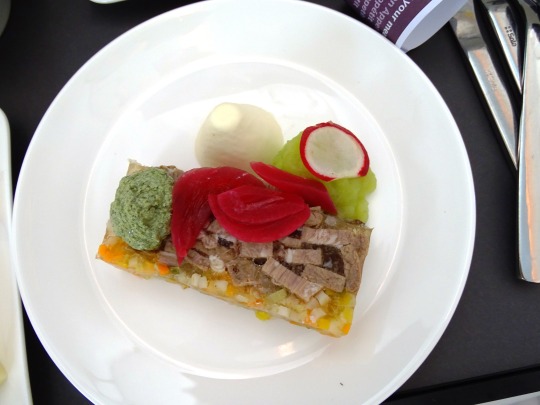






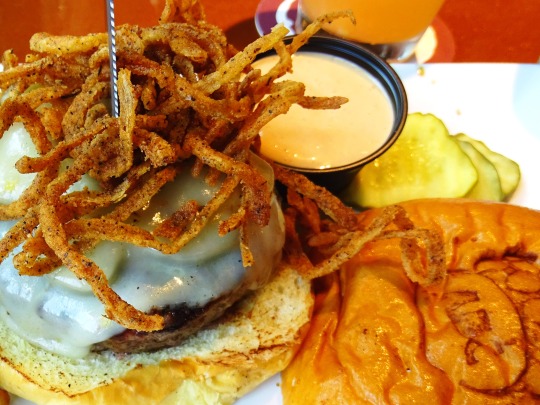
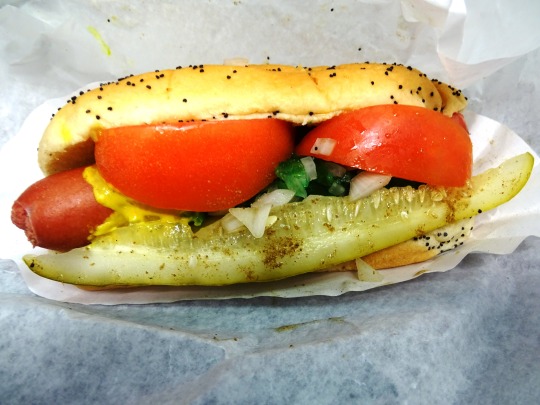



Snack a Pickle Day
Snack a Pickle Day is a day for snacking on pickles. Pickles, which usually mean pickled cucumbers when spoke of in the United States, are preserved in a brine or vinegar solution, and flavored with herbs and seasonings. The word “pickle” is derived from the Dutch word pekel, which means brine. The pickling process was invented around 1440, and many people were making pickles in their homes by the 1600’s. This was helped with the invention of the mason jar in 1858. Pickles are a low calorie food and high in vitamin K, but they may also be high in sodium. Each year Americans eat about 9 pounds of pickles.
How to Observe Snack a Pickle Day
The day should be celebrated by snacking on a pickle! Pickles can be eaten on their own or with a meal. They can be put on a hamburger,or chopped into a relish and put on a hot dog. Sometimes they are served on a stick, and sometimes they are even deep fried. There are many types of pickles to try:
Bread and butter—part of sweet family of pickles; has onions and bell peppers; sometimes have a waffle-esque shape; solution of vinegar, sugar, and spices; name comes from Omar and Cora Fanning, Illinois cucumber farmers who started selling the pickles in the early 1920’s and filed for the name in 1923; name derived from how they traded their pickles for things like bread and butter during rough years.
Cinnamon—bright red and flavored with cinnamon; sometimes a Christmas treat.
Dill—made with dill herbs or dill oil; have been served in New York City since at least 1899.
Gherkins—smaller and usually sweeter; made with Burr or West Indian cucumbers; sometimes “gherkin” is a generic term used for pickles in the U.K., Ireland, Australia, and New Zealand.
Kool-aid—soaked in kool-aid and pickle brine.
Kosher dill—dill pickle with lots of garlic in the salt brine.
Polish—somewhere between kosher dill and sour.
Sour—fermented longer in brine, which makes them sourer.
Sour mixed—sour pickles cut and mixed with other veggie such as onions, cauliflower, carrots, and peppers.
Sour relish—made with finely chopped sour pickles with other vegetables; also called “piccalili.”
Sweet—usually made with vinegar, spices, and sugar; includes sliced sweet pickles, or “cross cuts”, which are cut crosswise into chips.
Sweet mixed—sweet pickles mixed with other vegetables.
Source
#Bacon Mushroom Mikeburger#beetroot#salmon#Mille Feuiilles#Ribelles#SnackAPickleDay#Fire Jumper Burger#13 September#Snack a Pickle Day#Chicago Hot Dog#Cubano Sandwich#El Paso Burger#Nacho Fry#Sourdough Chicken Melt#Hot Mex burger#travel#original photography#vacation#USA#Canada#Sweden#food#restaurant
5 notes
·
View notes
Text
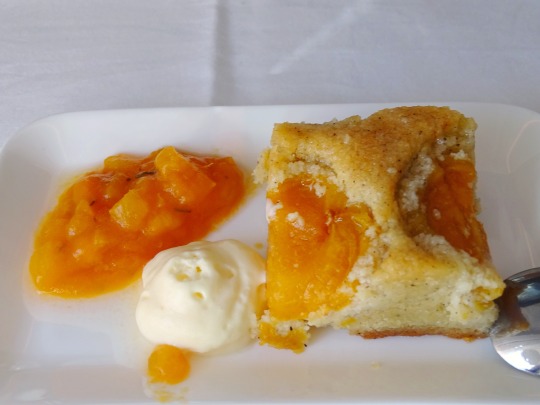
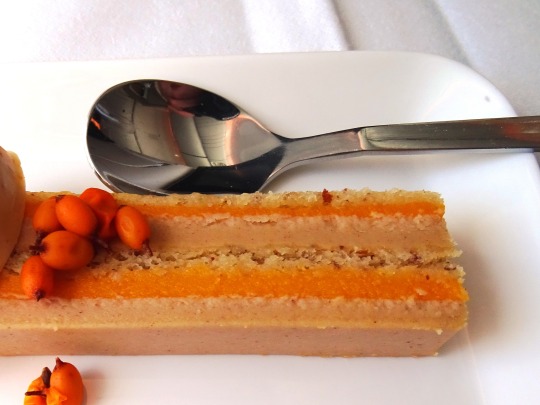


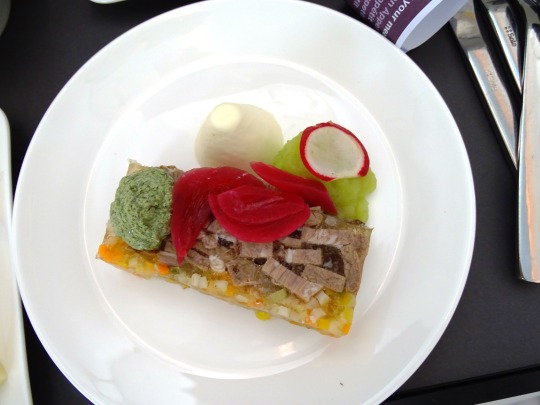
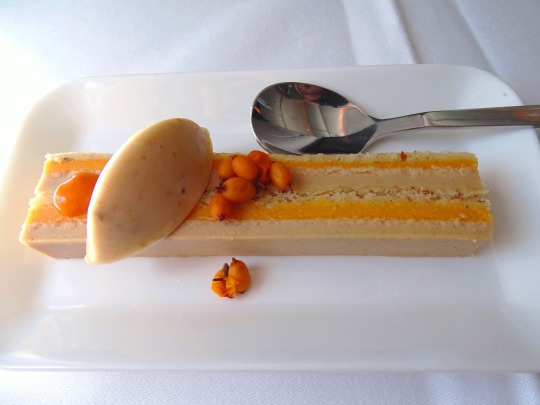
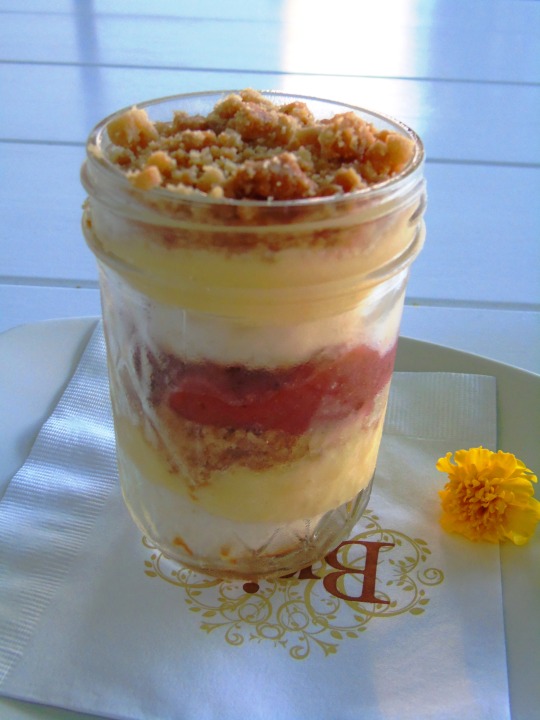
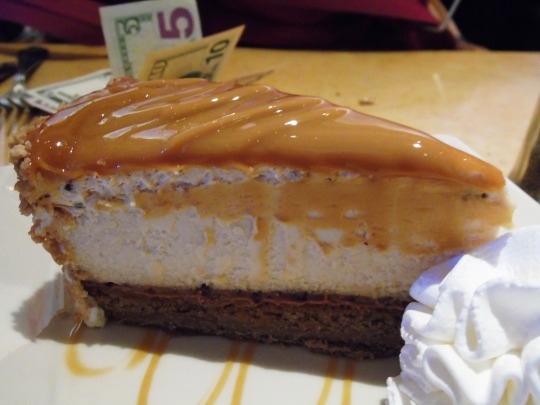
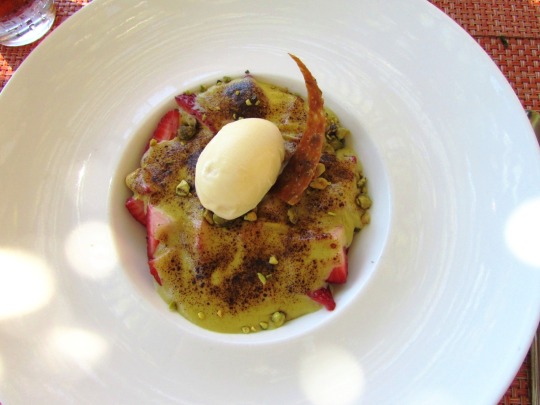
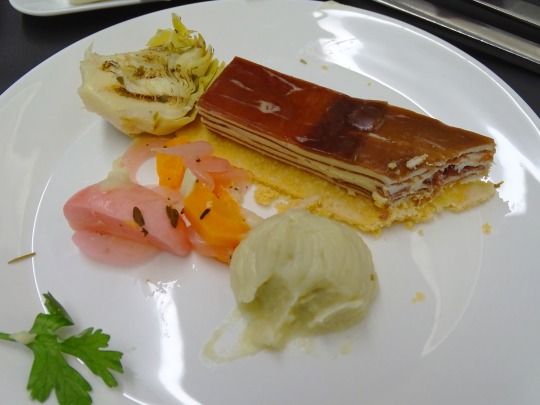

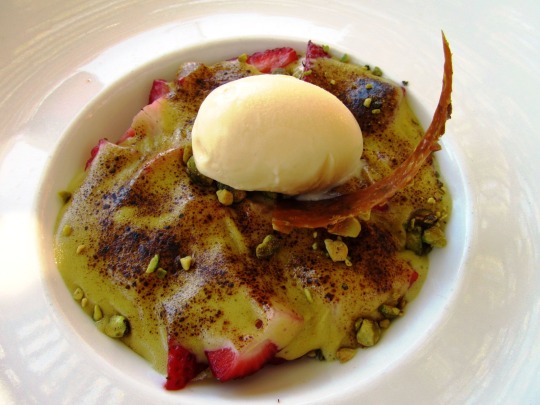

National Mousse Day
National Mousse Day is celebrated on November 30 every year, and we can’t wait to whip up some lovey-dovey sweetness for our near and dear ones. If you’re fond of decadent desserts, you should definitely get the most out of this food holiday. Did you know that the word ‘mousse’ is derived from French? In Old French, it means ‘froth’ or ‘foam’. As the name suggests, this appetizer is made by beating egg whites and cream until they turn light and fluffy like foam. Although it is more popularly served as a dessert, mousse can also be prepared as a savory. Depending on the type of mousse, its consistency can vary from thick and creamy to light and airy. Originally prepared in France, mousse found its way into the United States only in the late 19th century. And aren’t we all glad that it did?
History of National Mousse Day
When someone says ‘mousse’, don’t you often imagine it as a chocolaty delight? We know — almost always! Surprisingly, mousse was first concocted as a savory dish in 18th century France. It was only in the latter half of the 19th century that fruit mousses became a thing. The French would add whipped cream into fruit, coffee, or liqueurs, or pour the cream on top in the shape of a pyramid. They called this ‘crème en mousse,’ which means ‘cream in a foam’. Present-day recipes of mousse have branched out from this bygone tradition. If you are not a fan of whipped cream, you may consider replacing it with some viciously whisked egg whites.
The most popular version of mousse today, chocolate mousse, wasn’t always so popular. In fact, it really got into the public eye in the U.S. in the 1930s. This was the time when chocolate pudding was being introduced into American food culture. You could say that the chocolate mousse drew its inspiration from pudding.
Mousses are ideally served cold, while sweet mousses are sometimes served frozen. The best thing about mousse is that it conveniently lends itself to both savory and sweet recipes. From a thick salmon mousse as a starter to smooth raspberry mousse or the classic chocolate mousse for dessert, there is practically no limit to the flavors that a mousse can embrace. Whereas it also works as a filling in pastries and parfaits, a savory mousse goes well with cheese and fruit platters, turning them into good-looking appetizers.
In many restaurants today, savory mousses are prepared using foie gras, shellfish, avocado, poultry, vegetables, cheese, and other ingredients. Commonly dished out as a light entrée or an appetizer, mousses are often stabilized by adding gelatin to them.
National Mousse Day timeline
1892 The Mousse is Documented
The first-ever documented record of chocolate mousse comes from a Food Exposition held at Madison Square Garden, N.Y.C.
1897 First Recipe Appears in Print
The Boston Daily Globe publishes one of the first recipes for chocolate mousse, in its 'Housekeeper’s Column.'
Late 19th century Fruit Desserts Make an Entry
The first sweet mousses make their entry into America, and they are fruit mousses topped with whipped cream.
1930s Mousse Introduced
Chocolate pudding — the predecessor of chocolate mousse — is introduced into American food culture.
National Mousse Day FAQs
Is there a separate holiday to celebrate chocolate mousse?
Yes! While National Mousse day celebrates all kinds of mousses, we have a day designated only for chocolate mousse. We celebrate it on April 3.
Is vegan mousse a thing?
Very much. With a lot of people turning vegan, restaurants are trying to incorporate vegan mousses into their menus. Some of the commonly known substitutes for whipped egg whites are avocados, cashew nut paste, and chickpea brine.
What are some of the best places to try mousse in New York?
While there are innumerable places in New York that serve mousse, the best ones include Veniero’s Pasticceria & Caffe in East Village, Ferrara Bakery on 195 Grand St., Carlo’s Bake Shop on 625 8th Ave, and Dulce Vida Latin Bistro on 1219 Lexington Ave.
National Mousse Day Activities
Try a new mousse recipe
Go out for a moussey dinner
Shout out on social media
National Mousse Day is the perfect occasion to try your hands at baking, and whip up a unique mousse recipe. We place our bets on salted caramel mousse, pumpkin mousse, and blue cheese mousse. Go on, let your friends and family oooh with your baking skills!
On a food holiday, what could be a better way of celebrating it than going out for a sumptuous dinner with your loved ones? We’d suggest you opt for a mousse parlor and try out interesting mousse dishes.
This National Mousse Day, raise a toast to the makers of mousse, for bringing this delicious treat into our lives. Create an appreciation post on social media to let the world know of this amazing food holiday.
5 Important Facts About Mousse
Thanks to electric mixers
What a fish!
Largest mousse in the world
Why foamy?
Hot or cold?
The invention of electric mixers led to the widespread popularity of mousse — it is assumed that the first mixer with an electric motor was invented by Rufus Eastman in 1885.
Fish mousse, paired with bread and butter, used to be a much sought-after meal in America — although it has lost its popularity in recent times, fish mousse is still served as a party dip, by esteemed mousse aficionados.
Aventura Mall in Miami set a Guinness World Record for the largest chocolate mousse, by preparing a mousse weighing about 496 pounds.
Eggs and cream when beaten to perfection form air bubbles that give mousse its light and airy texture.
Mousse can be frozen to make ice cream, as well as served hot.
Why We Love National Mousse Day
A divine dish
Versatile
Meetups and hangouts
Isn’t it wonderful to have a day designated to appreciate the beauty of mousse? You can’t deny that a scoop of creamy mousse has the power to brighten an otherwise mundane day. And we absolutely love that about mousse!
Whether you’re craving a dessert or a savory appetizer, mousse can always bend itself to suit your taste buds. Basically, it can make everyone happy.
Mousse Day gives us the opportunity to invite our friends over for a bake-over (like a sleepover) and hang out with them at our favorite dessert parlor. Isn’t that lovely?
Source
#horseradish mousse#apricot cake#white nougat mousse#seaberry#hazelnut#Salted Caramel Cheesecake#Creamy Caramel Mousse#Chocolate Tuxedo Cream Cheesecake#USA#travel#Vanilla Mascarpone Mousse#Oreo Dream Extreme Cheesecake#Oreo Cookie Mousse#food#dessert#restaurant#original photography#National Mousse Day#Bündner Fleisch Mille Feuiilles#NationalMousseDay#30 November#Strawberry & Pistachio Gratin#Strawberry Rhubarb Parfait
0 notes
Photo
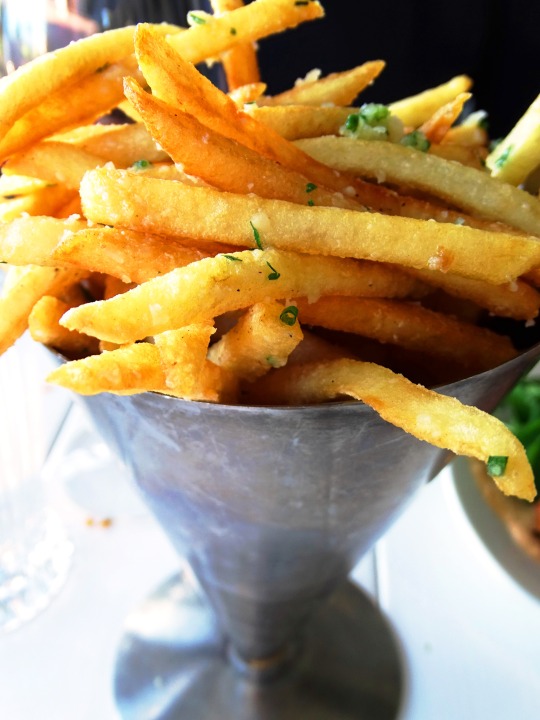

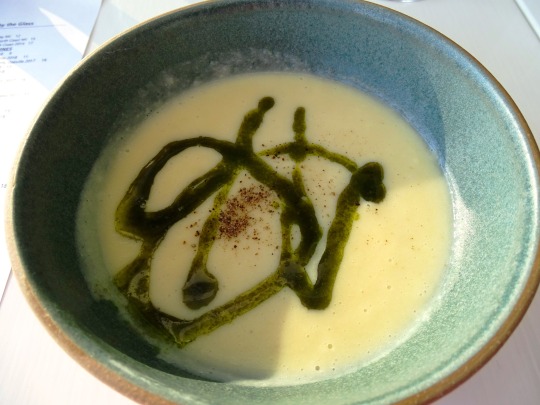


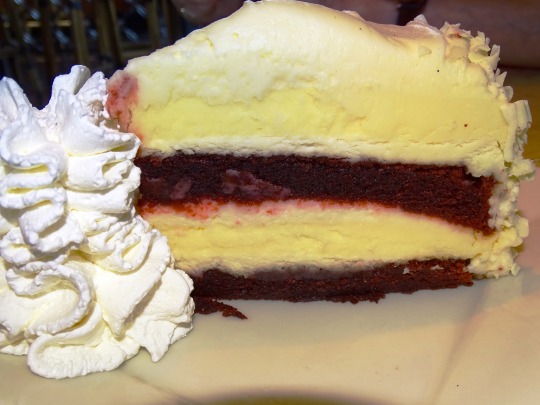

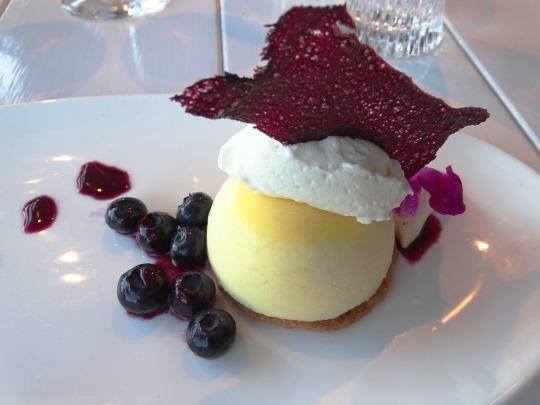
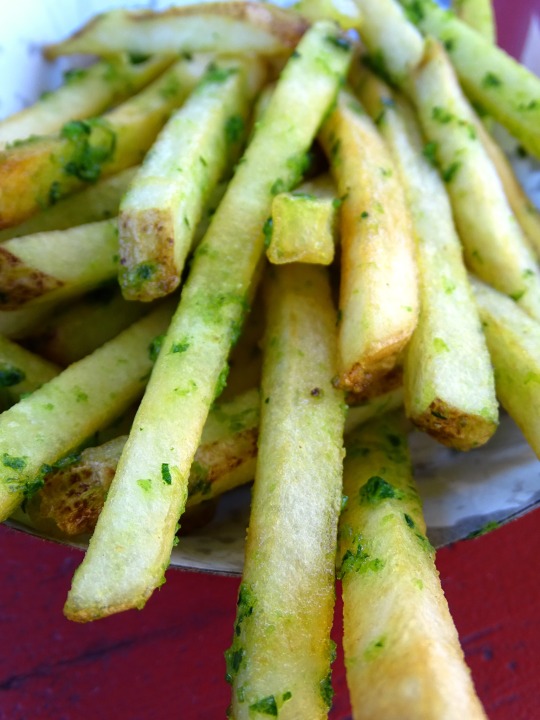
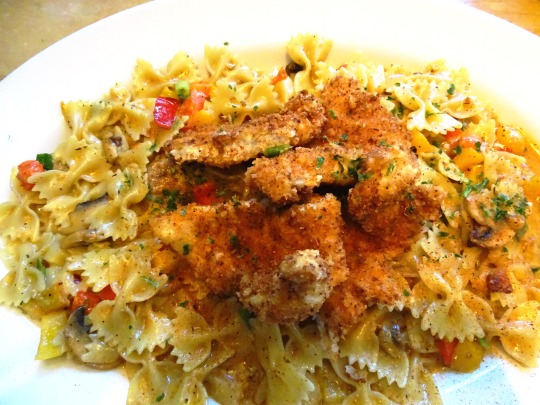
Excellent Food and Drinks on My Vacations (No. 6)
I travelled a lot; and still do. I love to eat and have a nice drink. Here are some of the best foods, drinks and wines I had to pleasure to enjoy. It starts with this year and goes back in time. I hope you like the pics as much as I loved this food.
Please contact me, if you want some further information about the food and/or restaurants.
#Bündner Fleisch Mille Feuiilles#USA#summer 2019#original photography#travel#restaurant#vacation#appetizer#entrée#Garlic Fries#St. Helena#California#Gott's Roadside#Sweet White Corn Soup#Napa Valley#Brix Restaurant & Gardens#Niman Ranch Prime New York Strip#Fried Green Tomatoes#dessert#Lemon Semifreddo#Truffle Fries#Louisiana Chicken Pasta#Reese’s Peanut Butter Chocolate Cake Cheesecake#Ultimate Red Velvet Cake Cheesecake
0 notes
Photo

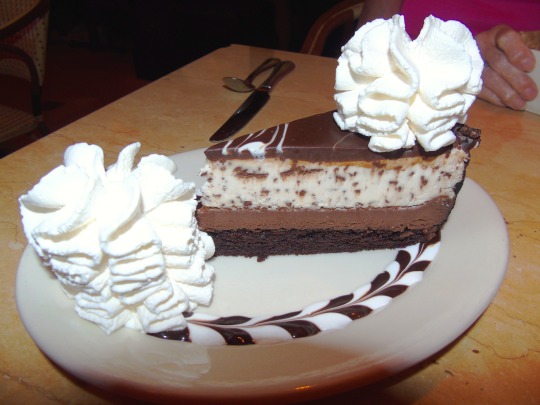

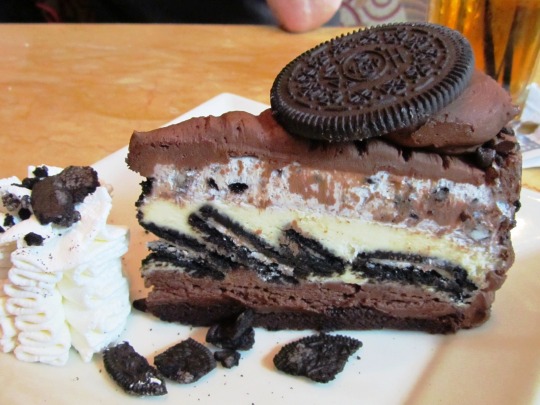
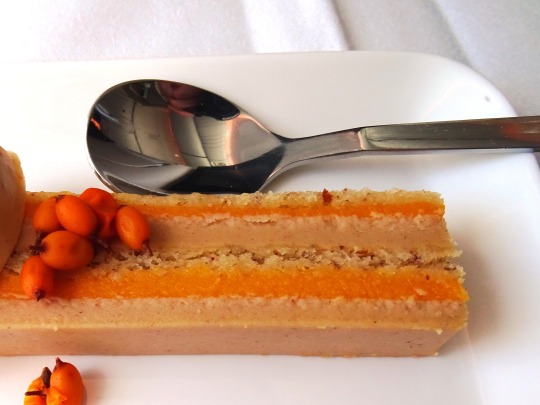

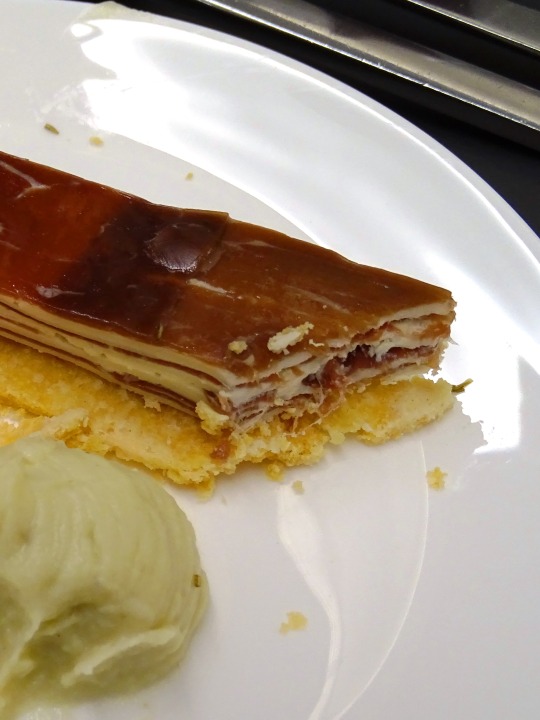
National Mousse Day
National Mousse Day is celebrated on November 30 every year, and we can’t wait to whip up some lovey-dovey sweetness for our near and dear ones. If you’re fond of decadent desserts, you should definitely get the most out of this food holiday. Did you know that the word ‘mousse’ is derived from French? In Old French, it means ‘froth’ or ‘foam’. As the name suggests, this appetizer is made by beating egg whites and cream until they turn light and fluffy like foam. Although it is more popularly served as a dessert, mousse can also be prepared as a savory. Depending on the type of mousse, its consistency can vary from thick and creamy to light and airy. Originally prepared in France, mousse found its way into the United States only in the late 19th century. And aren’t we all glad that it did?
History of National Mousse Day
When someone says ‘mousse’, don’t you often imagine it as a chocolaty delight? We know — almost always! Surprisingly, mousse was first concocted as a savory dish in 18th century France. It was only in the latter half of the 19th century that fruit mousses became a thing. The French would add whipped cream into fruit, coffee, or liqueurs, or pour the cream on top in the shape of a pyramid. They called this ‘crème en mousse,’ which means ‘cream in a foam’. Present-day recipes of mousse have branched out from this bygone tradition. If you are not a fan of whipped cream, you may consider replacing it with some viciously whisked egg whites.
The most popular version of mousse today, chocolate mousse, wasn’t always so popular. In fact, it really got into the public eye in the U.S. in the 1930s. This was the time when chocolate pudding was being introduced into American food culture. You could say that the chocolate mousse drew its inspiration from pudding.
Mousses are ideally served cold, while sweet mousses are sometimes served frozen. The best thing about mousse is that it conveniently lends itself to both savory and sweet recipes. From a thick salmon mousse as a starter to smooth raspberry mousse or the classic chocolate mousse for dessert, there is practically no limit to the flavors that a mousse can embrace. Whereas it also works as a filling in pastries and parfaits, a savory mousse goes well with cheese and fruit platters, turning them into good-looking appetizers.
In many restaurants today, savory mousses are prepared using foie gras, shellfish, avocado, poultry, vegetables, cheese, and other ingredients. Commonly dished out as a light entrée or an appetizer, mousses are often stabilized by adding gelatin to them.
National Mousse Day timeline
1892 The Mousse is Documented
The first-ever documented record of chocolate mousse comes from a Food Exposition held at Madison Square Garden, N.Y.C.
1897 First Recipe Appears in Print
The Boston Daily Globe publishes one of the first recipes for chocolate mousse, in its 'Housekeeper’s Column.'
Late 19th century Fruit Desserts Make an Entry
The first sweet mousses make their entry into America, and they are fruit mousses topped with whipped cream.
1930s Mousse Introduced
Chocolate pudding — the predecessor of chocolate mousse — is introduced into American food culture.
National Mousse Day FAQs
Is there a separate holiday to celebrate chocolate mousse?
Yes! While National Mousse day celebrates all kinds of mousses, we have a day designated only for chocolate mousse. We celebrate it on April 3.
Is vegan mousse a thing?
Very much. With a lot of people turning vegan, restaurants are trying to incorporate vegan mousses into their menus. Some of the commonly known substitutes for whipped egg whites are avocados, cashew nut paste, and chickpea brine.
What are some of the best places to try mousse in New York?
While there are innumerable places in New York that serve mousse, the best ones include Veniero’s Pasticceria & Caffe in East Village, Ferrara Bakery on 195 Grand St., Carlo’s Bake Shop on 625 8th Ave, and Dulce Vida Latin Bistro on 1219 Lexington Ave.
National Mousse Day Activities
Try a new mousse recipe
Go out for a moussey dinner
Shout out on social media
National Mousse Day is the perfect occasion to try your hands at baking, and whip up a unique mousse recipe. We place our bets on salted caramel mousse, pumpkin mousse, and blue cheese mousse. Go on, let your friends and family oooh with your baking skills!
On a food holiday, what could be a better way of celebrating it than going out for a sumptuous dinner with your loved ones? We’d suggest you opt for a mousse parlor and try out interesting mousse dishes.
This National Mousse Day, raise a toast to the makers of mousse, for bringing this delicious treat into our lives. Create an appreciation post on social media to let the world know of this amazing food holiday.
5 Important Facts About Mousse
Thanks to electric mixers
What a fish!
Largest mousse in the world
Why foamy?
Hot or cold?
The invention of electric mixers led to the widespread popularity of mousse — it is assumed that the first mixer with an electric motor was invented by Rufus Eastman in 1885.
Fish mousse, paired with bread and butter, used to be a much sought-after meal in America — although it has lost its popularity in recent times, fish mousse is still served as a party dip, by esteemed mousse aficionados.
Aventura Mall in Miami set a Guinness World Record for the largest chocolate mousse, by preparing a mousse weighing about 496 pounds.
Eggs and cream when beaten to perfection form air bubbles that give mousse its light and airy texture.
Mousse can be frozen to make ice cream, as well as served hot.
Why We Love National Mousse Day
A divine dish
Versatile
Meetups and hangouts
Isn’t it wonderful to have a day designated to appreciate the beauty of mousse? You can’t deny that a scoop of creamy mousse has the power to brighten an otherwise mundane day. And we absolutely love that about mousse!
Whether you’re craving a dessert or a savory appetizer, mousse can always bend itself to suit your taste buds. Basically, it can make everyone happy.
Mousse Day gives us the opportunity to invite our friends over for a bake-over (like a sleepover) and hang out with them at our favorite dessert parlor. Isn’t that lovely?
Source
#white nougat mousse#seaberry#hazelnut#Salted Caramel Cheesecake#Creamy Caramel Mousse#Chocolate Tuxedo Cream Cheesecake#USA#travel#Vanilla Mascarpone Mousse#Oreo Dream Extreme Cheesecake#Oreo Cookie Mousse#food#dessert#restaurant#original photography#National Mousse Day#Bündner Fleisch Mille Feuiilles#NationalMousseDay#30 November
0 notes
Photo
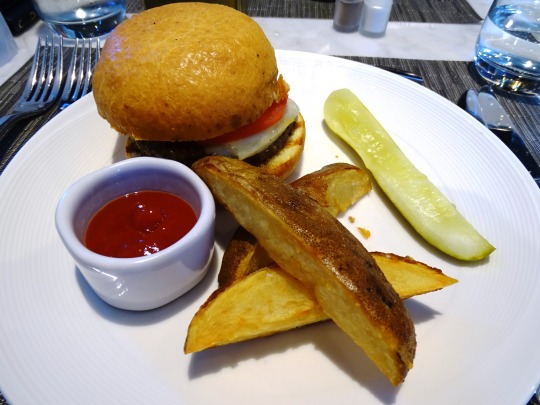
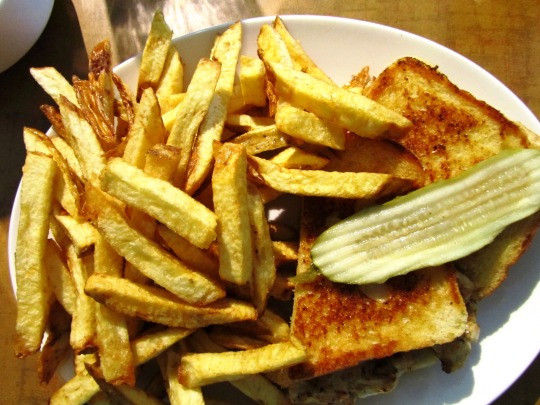

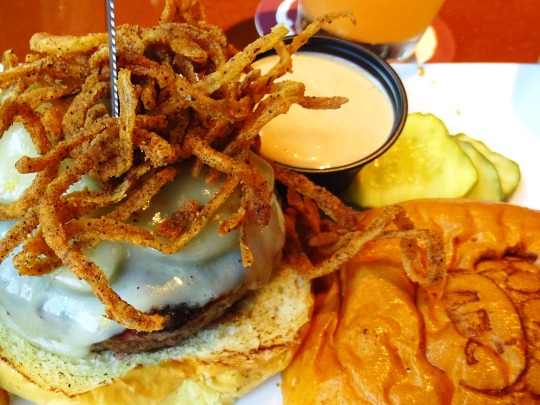
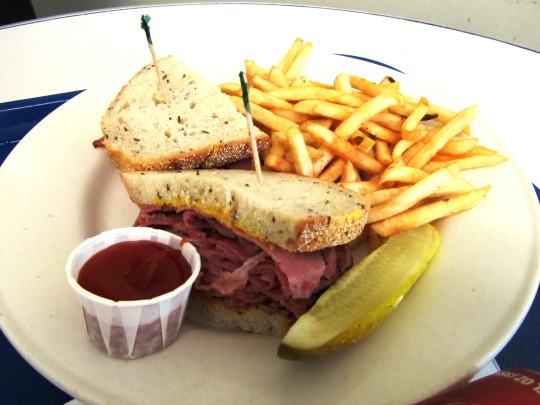
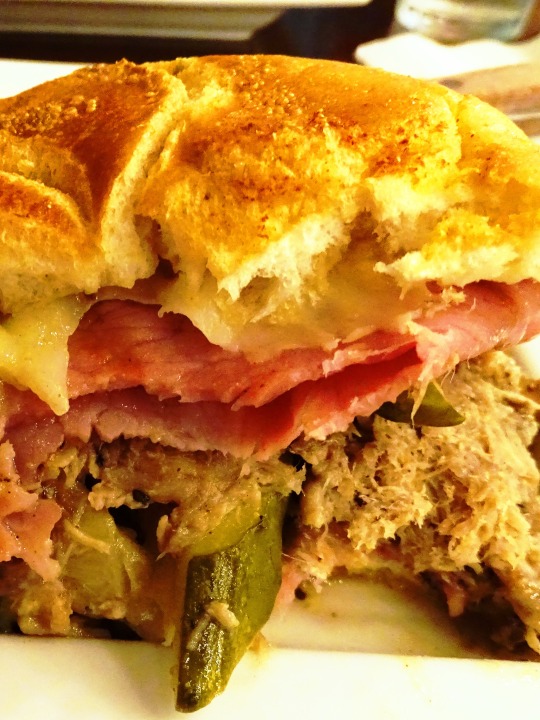



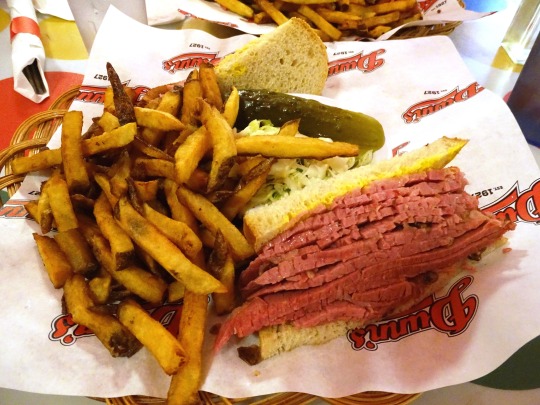
National Pickle Day
It’s National Pickle Day, everyone! Did you forget? Oh, then you must think you’re in a right pickle, but don’t worry. Be as cool as a cucumber, because there’s still time to munch on some pickles, yet.
No matter whether you like Gherkin, Dill, Lime, Bread-and-Butter, Branston, Cornishon, Hungarian, Polish, Danish or Swedish pickles, made in either in brine or vinegar, you can be sure these fermented morsels are so much more than mere hors d’oeuvres.
Granted, they don’t hold much value in terms of nutrition, except maybe for their moderate vitamin K as well as high sodium contents, and they don’t usually garnish the healthiest meals…but if it’s wrong to pump your blood full of pickle sodium, then you don’t want to be right. And heck, once you’re finished eating all of the pickles out of the jar, you might just drink the juice. Take that, nutritionists!
However, if you still happen to be hungry when you’re finished doing this, however, you can proceed to have a Koolickle or two for dessert. What are Koolickles, you ask? Koolickles are none other than pickles that has been marinated in brine and …Kool-aid, resulting in a sweet but tangy treat hat children seem to be fond of but that makes most adults shudder at the shameless combination of pre-made ingredients. So perhaps we’ll just stick to pickles.
History of National Pickle Day
Pickles take their name from the Dutch word for ‘brine’, and they began to be a popular food some 4,000 years ago, when cucumbers were first imported from India, as they hadn’t really existed in Europe or North Africa before then. Cleopatra is said to have attributed her looks and youth to the green treats among other things. Nowadays, no pensioner can go without a pickle in some parts of the world, while some pregnant women are said to crave them alongside ice-cream as part of their bizarre pregnancy-related food cravings.
How to Celebrate National Pickle Day
The best way to celebrate this day, and I’m sure you’ll all agree, if to consume as many pickles as possible. You can eat them straight of of a jar, but if you feel like trying your hand at a new dish you may want to make some traditional Polish pickle soup to warm you from head to foot on a chilly November day.
Source
#Fire Jumper Burger#Double Cheeseburger#Cuban Sandwich#Chicago Hot Dog#Bündner Fleisch Mille Feuiilles#Montreal Smoked Meat#Avocado Ranch Burger#Bucks Gone Wild#USA#Sourdough Chicken Melt#Canada#food#restaurant#fries#Pastrami Sandwich#original photography#Swiss Cheese#real Swiss cheese is the best cheese#Hiltl Tartar#Lozärner Birewegge#National Pickle Day#14 November#NationalPickleDay
1 note
·
View note
Photo
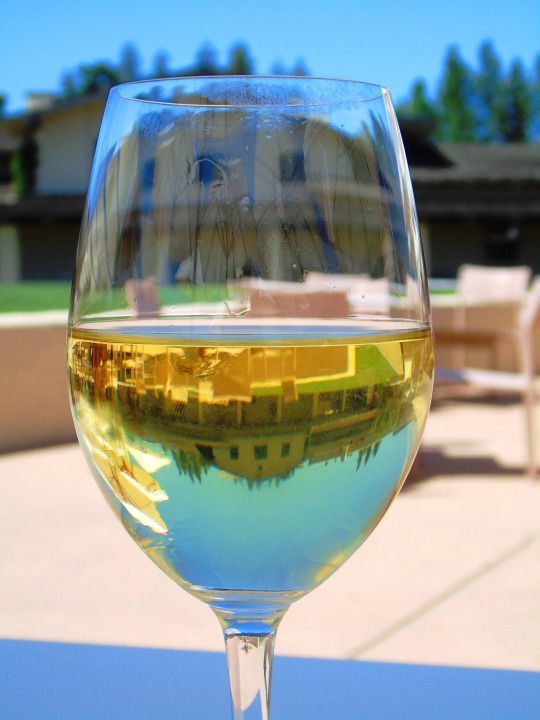
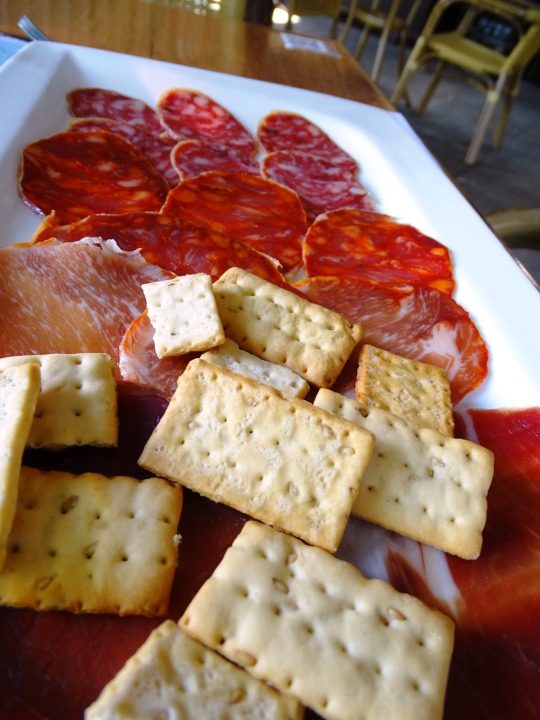


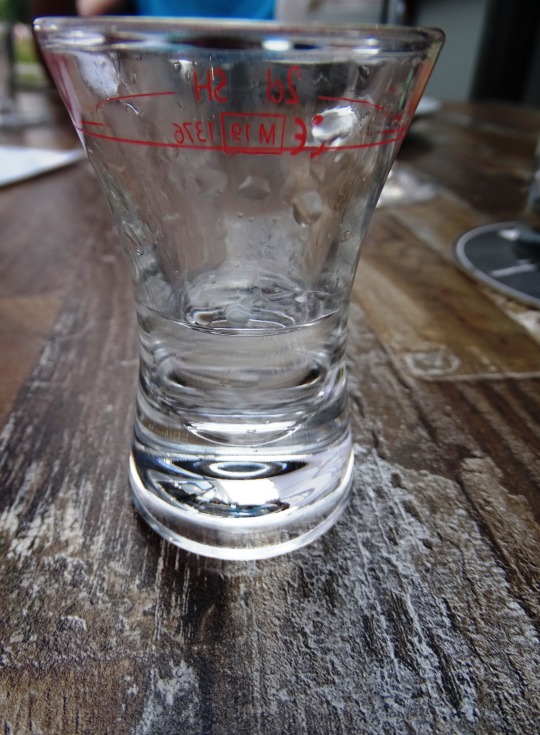

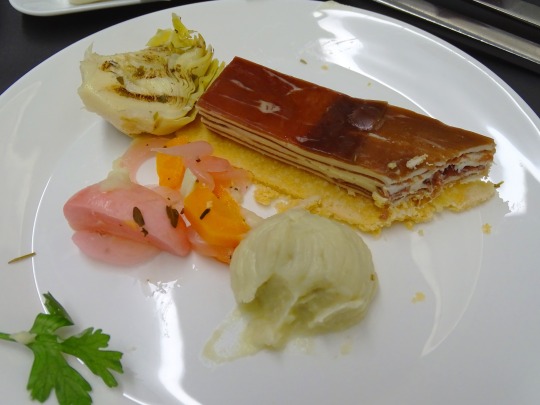


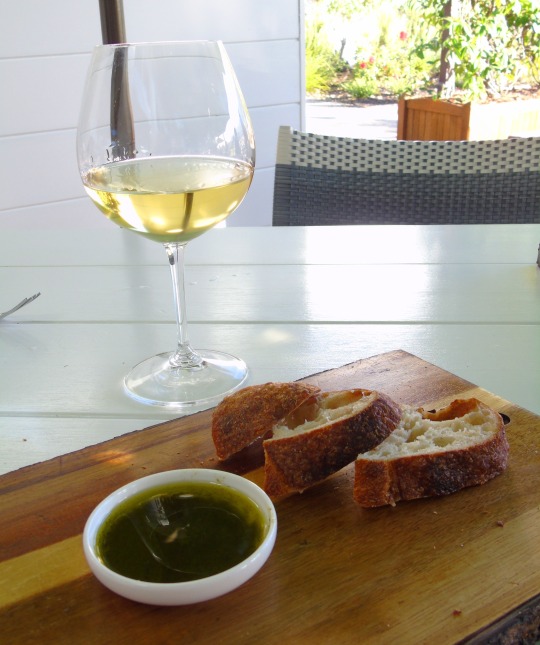
National Apéritif Day
If you need a little something to whet your whistle, go grab a glass. It’s National Aperitif Day, a spirited holiday observed annually on the third Thursday in May.
According to Merriam-Webster, an aperitif is “an alcoholic drink that people drink before eating a meal.” An aperitif stimulates the appetite and palate without overwhelming ones' senses. Best served cold, these clean and light cocktails typically contain vermouth, gin or Campari.
Source
An apéritif is an alcoholic beverage usually served before a meal to stimulate the appetite, and is therefore usually dry rather than sweet. Common choices for an apéritif are vermouth; champagne; pastis; gin; rakı; fino, amontillado or other styles of dry sherry (but not usually cream or oloroso blended sherry, which is very sweet and rich); and any still, dry, light white wine.
An apéritif may also be an hors d'oeuvre or amuse-bouche preceding a meal, such as crackers, cheese, pâté, quiche or olives.
Apéritif is a French word derived from the Latin verb aperire, which means "to open". The French slang word for apéritif is apéro, although in France an apéro is also food eaten in the late afternoon or early evening.
Source
#Ouzo#Bündner Fleisch Mille Feuiilles#Chorzio#salami#olives#feta cheese#Rosé#white wine#Robert Mondavi Winery#Sauvignon blanc#sparkling wine#Domaine Carneros#SAUVIGNON BLANC Kelleher Family Vineyards#olive oil#bread#National Apéritif Day#NationalAperitifDay#third Thursday in May#19 May 2022#original photography#don't drink and drive#Lisbon#Haro#Napa Valley#USA#Spain#Portugal#travel#vacation#Germany
0 notes
Photo

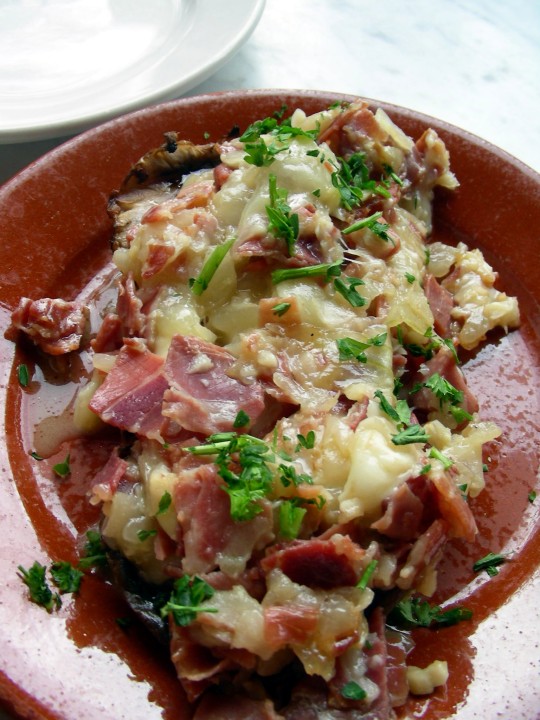
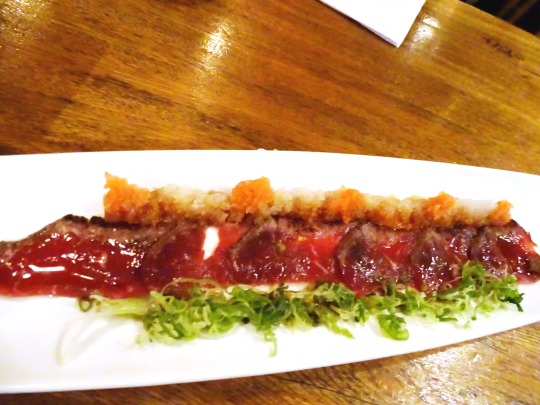
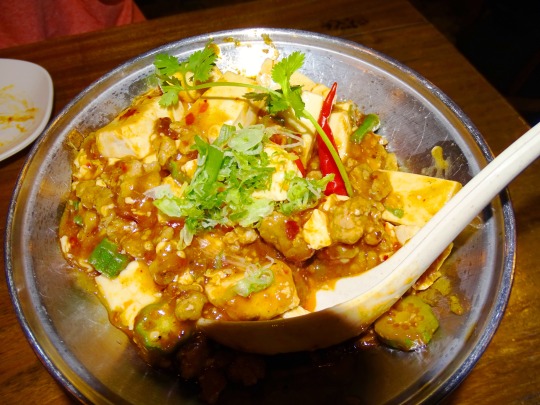
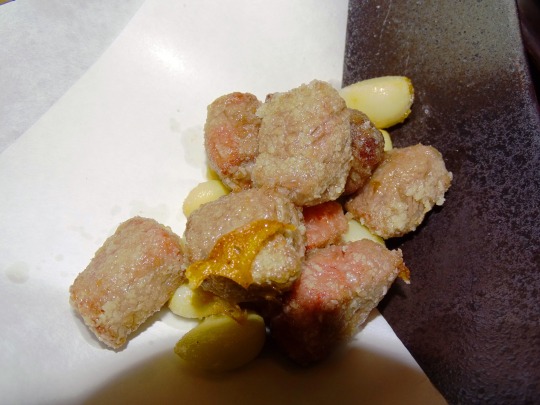

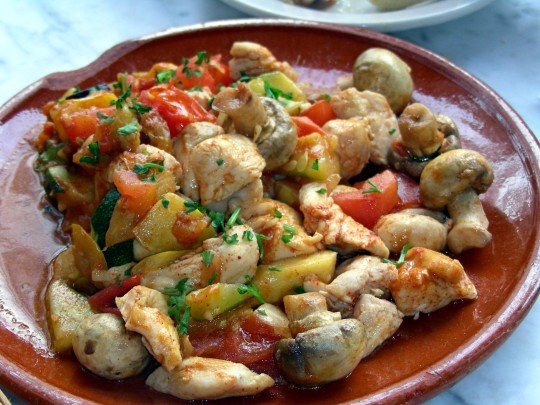
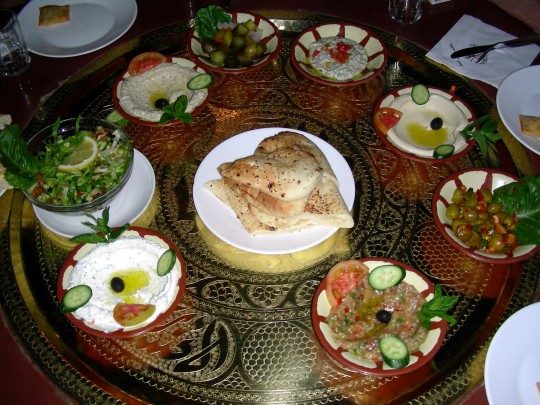


World Tapas Day
Never tried tapas? Then you’re missing out! On World Tapas Day, we’re all about celebrating everything that makes these bite-size savory dishes so great and tasty.
This mainstay of Spanish cuisine is often served up as a snack or as an appetizer before a meal, and can include lots of tasty things from olives and cheese to hams and squid.
Be sure to take the time out to try at least one tapas today – or perhaps visit a tapas restaurant and find out which ones you love best!
The History of World Tapas Day
The third Thursday of the month of June was designated as World Tapas Day by the country of its creation, Spain, in 2016. Being such a popular and famous method of serving up delicious goodies, it’s no wonder that it got its own day.
The word ‘tapas’ comes from the Spanish word ‘tapar’, which is a verb meaning ‘to cover’. The actual action of serving up small dishes was popularized before the 19th century when travelers visiting inns would often be served up small samples of food available.
There’s also a story that says that tapas was originally bread or meat which was draped over the mouths of sherry glasses in-between sips, to prevent flies from getting into the sweet beverage. Especially salty meats such as chorizo would be used to encourage the punters to keep drinking.
How to Celebrate World Tapas Day
Because tapas is essentially small portions of traditional or popular Spanish cuisine, there are so many types of tapas that you could try today.
Olives, Chorizo sausage, crusty bread, tender beef, battered squid, cabrales cheese, vegetables, fried quail eggs, anchovies, pork scallops, battered prawns, stuffed mussels, meatballs – the potential combinations are endless! Many restaurants give you the option of making your own meal combo with the variety of tapas available. Even the pickiest of eaters will find something to love!
Many restaurants give you the option of making your own meal combo with the variety of tapas available. Even the pickiest of eaters will find something to love!
A lot of the tapas you will find often includes pork, beef or fish – but there is a whole wealth of vegetarian tapas to enjoy if you’re not a meat eater.
And if you’re feeling adventurous on World Tapas Day, you could have a go at making your own homemade tapas. You’d be surprised how simple some are to make!
Source
#Bündner Fleisch Mille Feuiilles#World Tapas Day#WorldTapasDay#16 June#appetizer#mezze#they're not really Tapas#close enough#food#Jordan#USA#restaurant#Canada#Don Don Izakaya#Toronto#Beef Tataki#Deep Fried Garlic and Beef#Lotus Root Chips#Spicy Okra Tofu Pork#Champños Serranos#Verduras del labrador#Banchan#Ginger Fried Chicken#indoors#original photography
1 note
·
View note
Photo
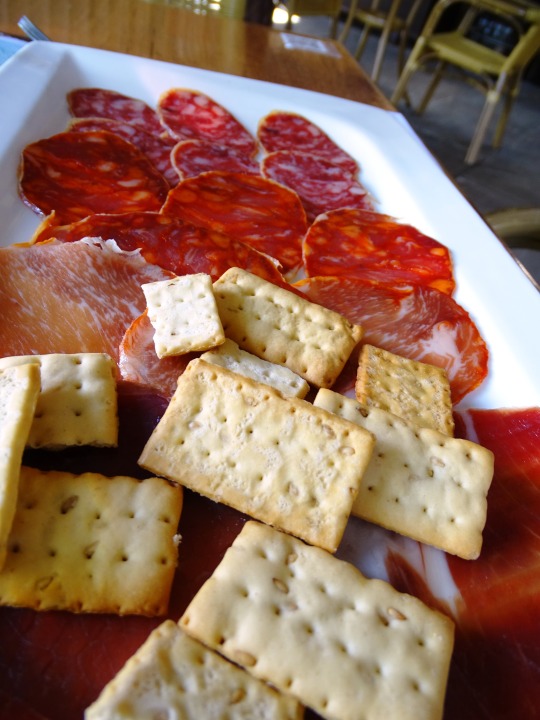
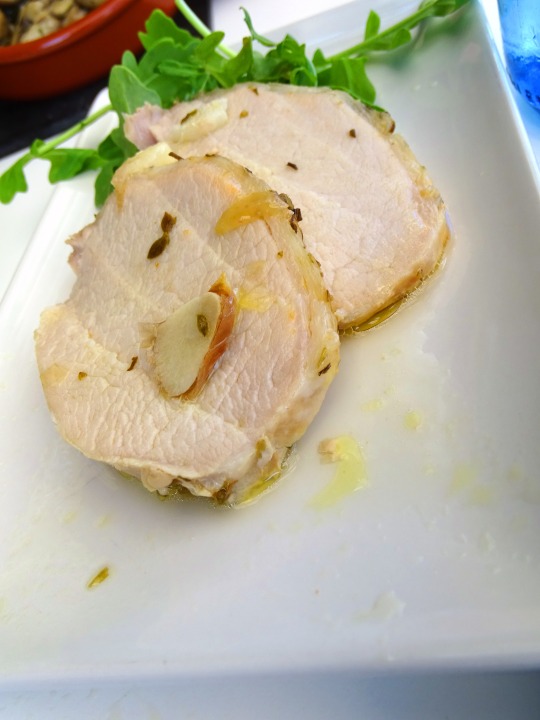
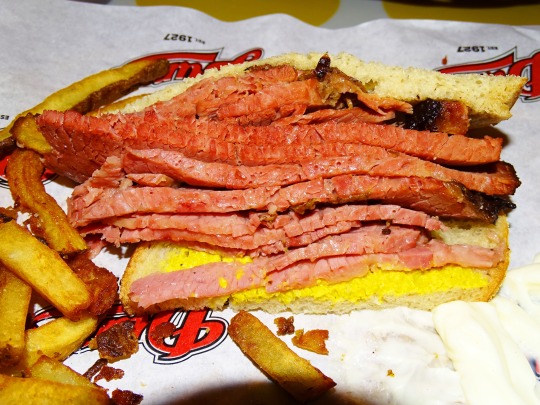
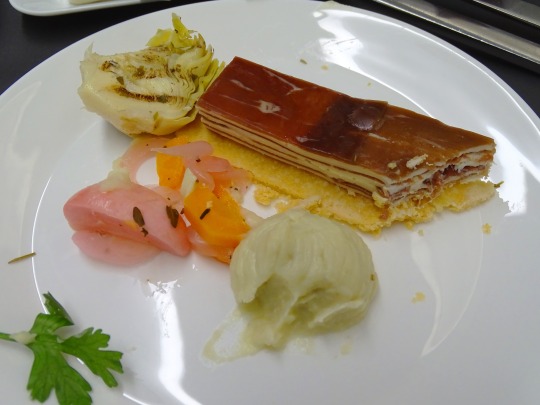
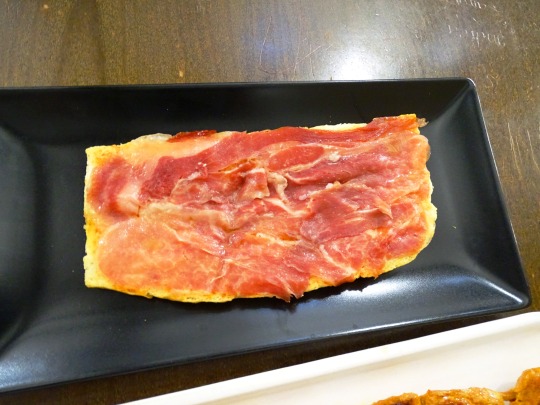
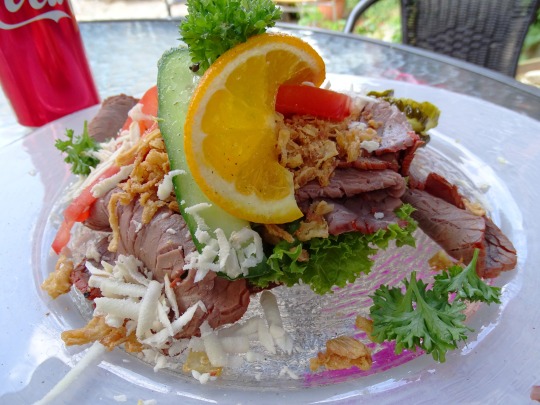
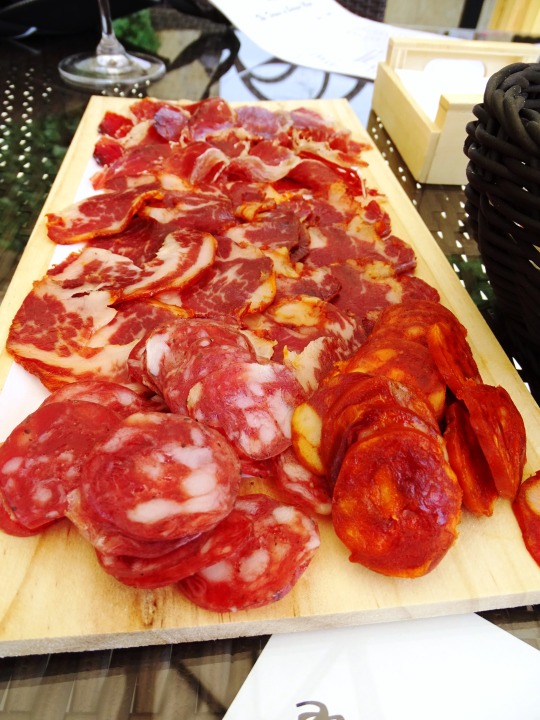

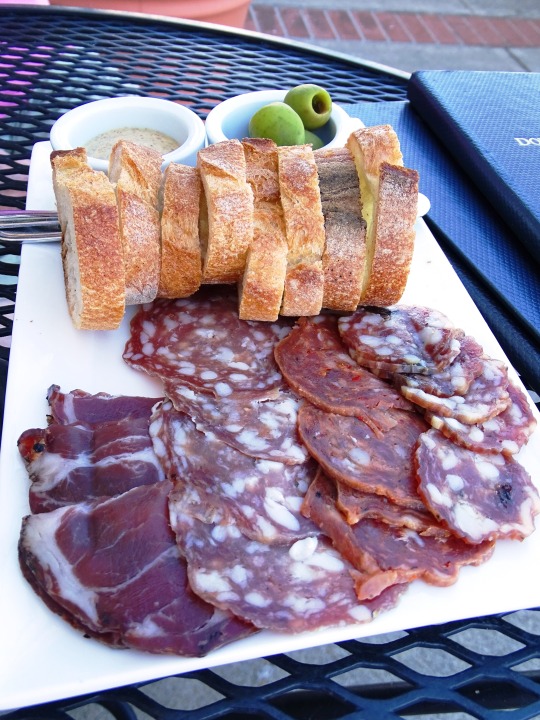
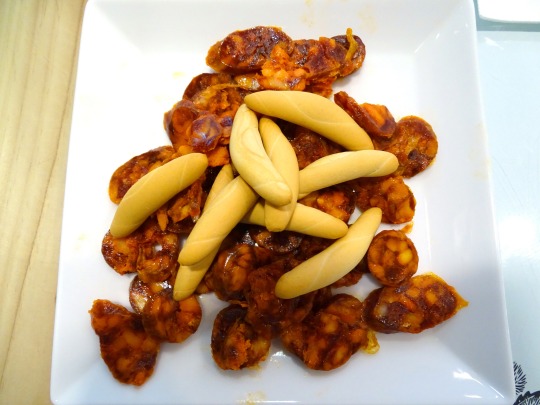
National Cold Cuts Day
A cold cut are those yummy, chilled slices of meat you get at the deli. You might pop them in sandwiches, you might have them drizzled with oil and with a few slices of cheese – whatever way you like them, Cold Cuts Day is all about celebrating all the tasty meats that are somehow even tastier when served up in slices.
You might know cold cuts as luncheon meat, sliced meats, smallgoods, Colton or simply cold meats. You can usually buy them packaged up and ready to eat at the grocery store or at your local deli, and depending on where you go you might be able to get them sliced to order. Because meat like this is pre-coooked, usually into sausage shapes or loaves, once it’s sliced its ready to eat right away. Perfect for getting your savoury fix in a hurry!
History of Cold Cuts Day
Luncheon meats have been around for generations. Their simple preparation and ease of use has led to them being a favorite sandwich filling, and these days its not uncommon to find them served alone or with bread in swanky restaurants and bars.
Cold cuts can be simply slices of meat straight from a cooked joint, which is then packaged and served up. These are known as whole cuts, where the meat is solid muscle and no other meats were added to the product. However, other cold cuts like salamis and sausages are processed with other meat proteins to make a super tasty, usually quite tidy-looking block of meat. The slices of pastrami and the like that you see on your deli counter have been made this way.
How to Celebrate Cold Cuts Day
This is an easy one! All you need to do is visit your local deli, and get yourself a selection of cold cut meats to try!
There’s so many types of cold cuts that you’re spoiled for choice – unless you’re vegetarian, of course. Bresaola, chicken loaf, corned beef, dutch loaf, prosciutto ham, meatloaf, mortadella, pork roll, a wealth of different salamis, bierwurst, bologna, chorizo, saucisson, teewurst, pastrami, even tongue – and that’s not even all the types of cold cuts you can get hold of!
Slip them into a sandwich for a quick and easy meal, or serve them up with fresh raw veggies and a little dressing for a healthy alternative. And don’t worry about the calories – they don’t count when its a day of observance!
Source
#tapas#National Cold Cuts Day#NationalColdCutsDay#3 March#travel#food#original photography#Spain#chorizo#summer 2021#salami#jamon#ham#crackers#Bündner Fleisch Mille Feuiilles#olives#baguette#Sweden#Roast beef with remoulade & fried onions Smörrebröd#Canada#fries#Medium Montreal Smoked Meat#Pastrami Sandwich#wine tasting#Europe#USA#don't drink and drive
0 notes
Photo


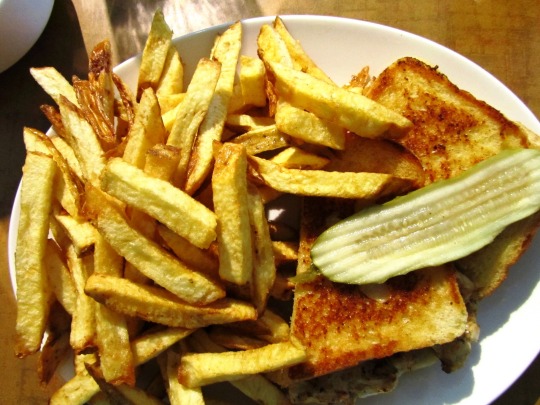
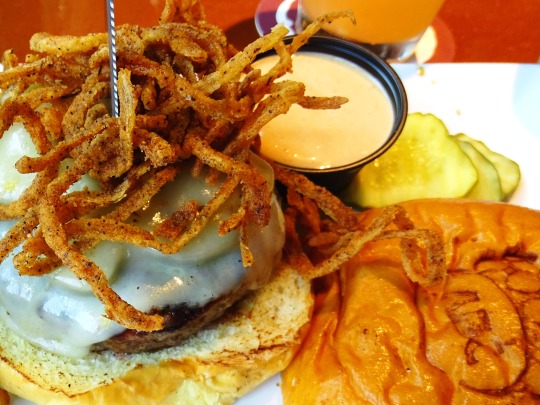
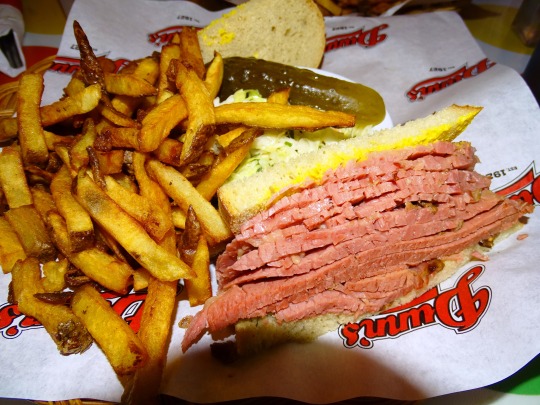

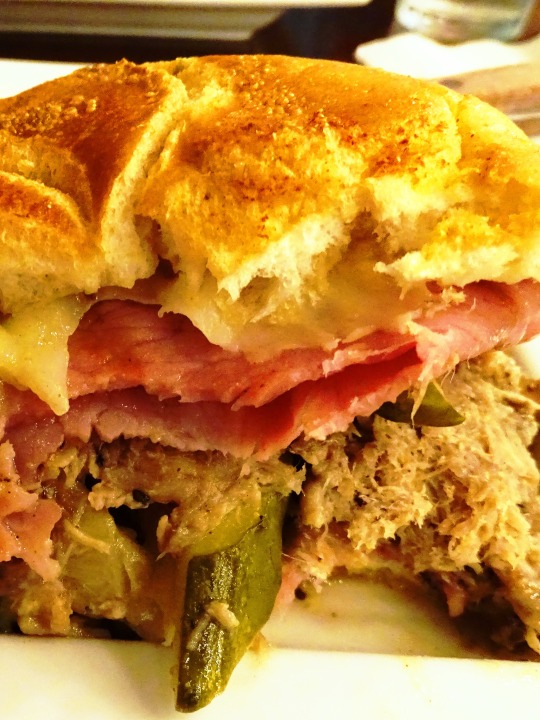

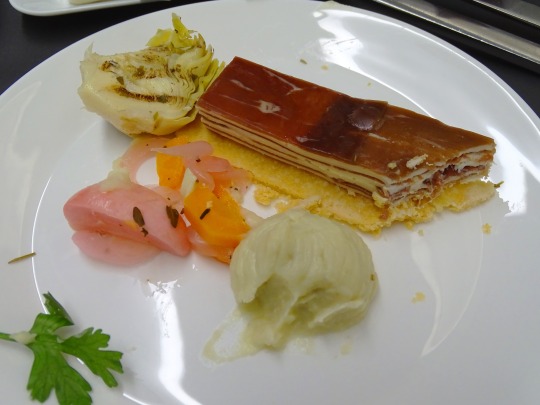

National Pickle Day
It’s Pickle Day, everyone! Did you forget? Oh, then you must think you’re in a right pickle, but don’t worry. Be as cool as a cucumber, because there’s still time to munch on some pickles, yet.
No matter whether you like Gherkin, Dill, Lime, Bread-and-Butter, Branston, Cornishon, Hungarian, Polish, Danish or Swedish pickles, made in either in brine or vinegar, you can be sure these fermented morsels are so much more than mere hors d’oeuvres.
Granted, they don’t hold much value in terms of nutrition, except maybe for their moderate vitamin K as well as high sodium contents, and they don’t usually garnish the healthiest meals…but if it’s wrong to pump your blood full of pickle sodium, then you don’t want to be right. And heck, once you’re finished eating all of the pickles out of the jar, you might just drink the juice. Take that, nutritionists!
However, if you still happen to be hungry when you’re finished doing this, however, you can proceed to have a Koolickle or two for dessert. What are Koolickles, you ask? Koolickles are none other than pickles that has been marinated in brine and …Kool-aid, resulting in a sweet but tangy treat hat children seem to be fond of but that makes most adults shudder at the shameless combination of pre-made ingredients. So perhaps we’ll just stick to pickles.
History of Pickle Day
Pickles take their name from the Dutch word for ‘brine’, and they began to be a popular food some 4,000 years ago, when cucumbers were first imported from India, as they hadn’t really existed in Europe or North Africa before then. Cleopatra is said to have attributed her looks and youth to the green treats among other things. Nowadays, no pensioner can go without a pickle in some parts of the world, while some pregnant women are said to crave them alongside ice-cream as part of their bizarre pregnancy-related food cravings.
How to Celebrate Pickle Day
The best way to celebrate this day, and I’m sure you’ll all agree, if to consume as many pickles as possible. You can eat them straight of of a jar, but if you feel like trying your hand at a new dish you may want to make some traditional Polish pickle soup to warm you from head to foot on a chilly November day. Didn’t know anything like that existed? Don’t worry, just live and learn, and enjoy the deliciousness that is salty and sour pickle soup.
The Simplest Polish Dill Pickle Soup
Ingredients: (serves 6-8)
6 cups vegetable stock/chicken stock/beef stock, depending on your preference
4 large dill pickles, shredded
1⁄2 cup pickle juice, from the pickle jar
2 cups thinly sliced, peeled potatoes
2 tablespoons instant flour
1 cup milk
In a large pot, combine the stock of your choice, the shredded pickles, pickle liquid & chopped potatoes. Bring to a boil again, then reduce the heat and cover. Cook covered over low heat until the potatoes start to get soft (that should take about 10 minutes). In a small bowl or a cup, combine the flour and the milk, and then add it to the broth. Bring the entire mixture to a boil and then remove from heat. Season with salt and pepper. Garnish with sour cream and or freshly chopped dill.
Source
#El Paso Burger#National Pickle Day#NationalPickleDay#14 November#travel#USA#original photography#Fire Jumper Burger#Chicago Hot Dog#Sourdough Chicken Melt#Medium Montreal Smoked Meat Combo#Canada#Cubano Sandwich#Pastrami Sandwich#Bucks Gone Wild#Bündner Fleisch Mille Feuiilles#summer vacation
1 note
·
View note
Photo
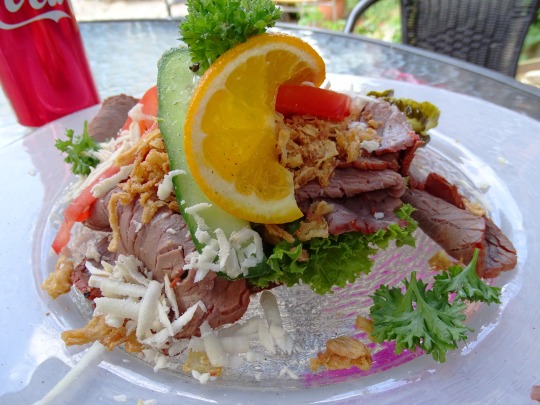



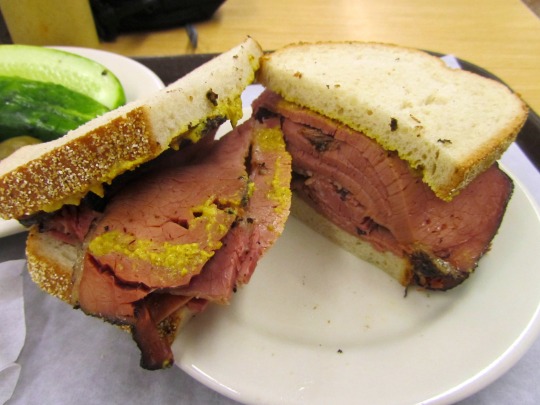
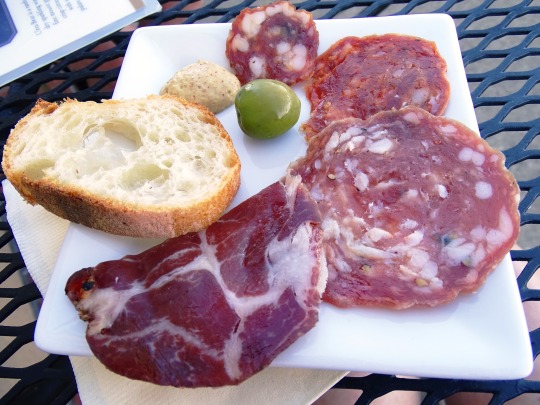
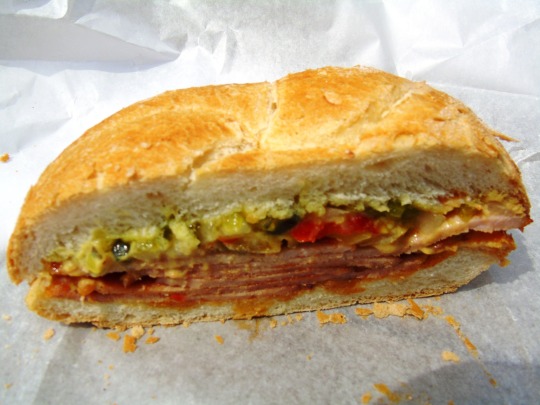
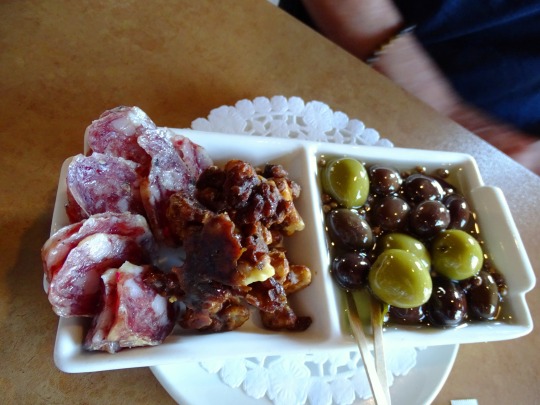
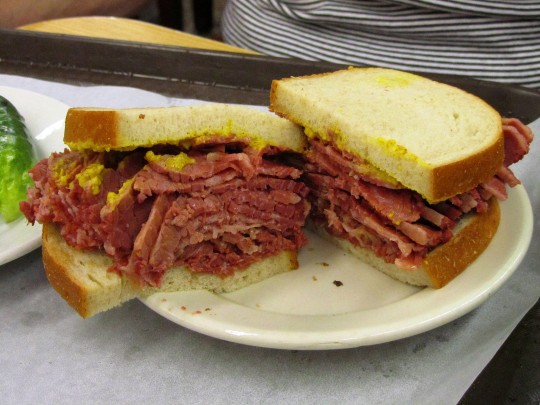

National Cold Cuts Day
A cold cut are those yummy, chilled slices of meat you get at the deli. You might pop them in sandwiches, you might have them drizzled with oil and with a few slices of cheese – whatever way you like them, Cold Cuts Day is all about celebrating all the tasty meats that are somehow even tastier when served up in slices.
You might know cold cuts as luncheon meat, sliced meats, smallgoods, Colton or simply cold meats. You can usually buy them packaged up and ready to eat at the grocery store or at your local deli, and depending on where you go you might be able to get them sliced to order. Because meat like this is pre-coooked, usually into sausage shapes or loaves, once it’s sliced its ready to eat right away. Perfect for getting your savoury fix in a hurry!
History of Cold Cuts Day
Luncheon meats have been around for generations. Their simple preparation and ease of use has led to them being a favorite sandwich filling, and these days its not uncommon to find them served alone or with bread in swanky restaurants and bars.
Cold cuts can be simply slices of meat straight from a cooked joint, which is then packaged and served up. These are known as whole cuts, where the meat is solid muscle and no other meats were added to the product. However, other cold cuts like salamis and sausages are processed with other meat proteins to make a super tasty, usually quite tidy-looking block of meat. The slices of pastrami and the like that you see on your deli counter have been made this way.
How to Celebrate Cold Cuts Day
This is an easy one! All you need to do is visit your local deli, and get yourself a selection of cold cut meats to try!
There’s so many types of cold cuts that you’re spoiled for choice – unless you’re vegetarian, of course. Bresaola, chicken loaf, corned beef, dutch loaf, prosciutto ham, meatloaf, mortadella, pork roll, a wealth of different salamis, bierwurst, bologna, chorizo, saucisson, teewurst, pastrami, even tongue – and that’s not even all the types of cold cuts you can get hold of!
Slip them into a sandwich for a quick and easy meal, or serve them up with fresh raw veggies and a little dressing for a healthy alternative. And don’t worry about the calories – they don’t count when its a day of observance!
Source
#Roast beef Smörrebröd#National Cold Cuts Day#NationalColdCutsDay#USA#3 March#Sweden#restaurant#food#Canada#travel#original photography#summer vacation#Bündner Fleisch Mille Feuiilles#charcuterie plate#salami#Baguette#olives#Medium Montreal Smoked Meat#noix caramélisées#Peameal bacon Sandwich#Pastrami Sandwich#Corned Beef Sandwich#street food#chorizo
0 notes
Photo




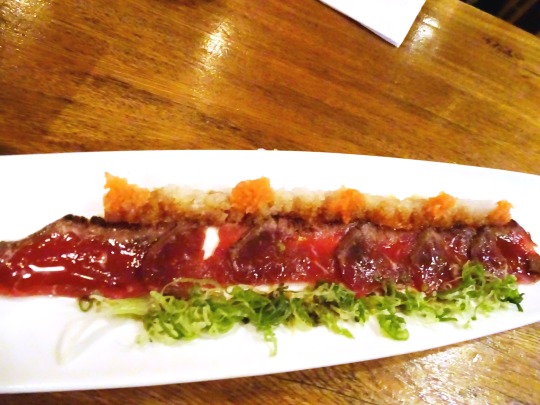
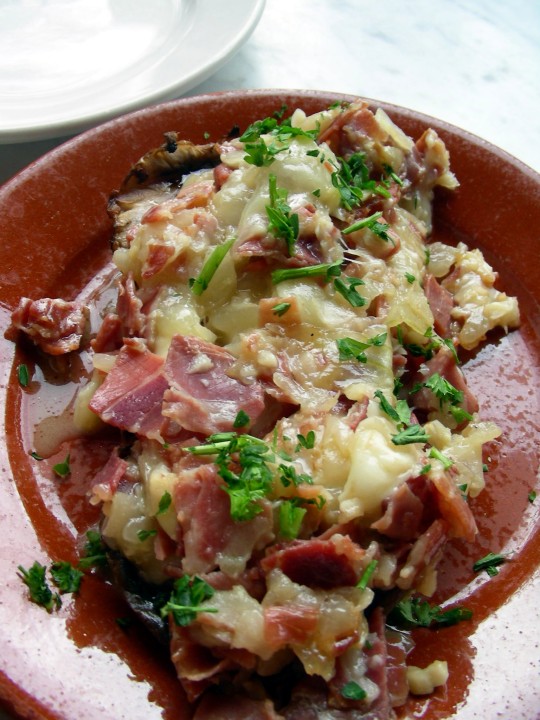

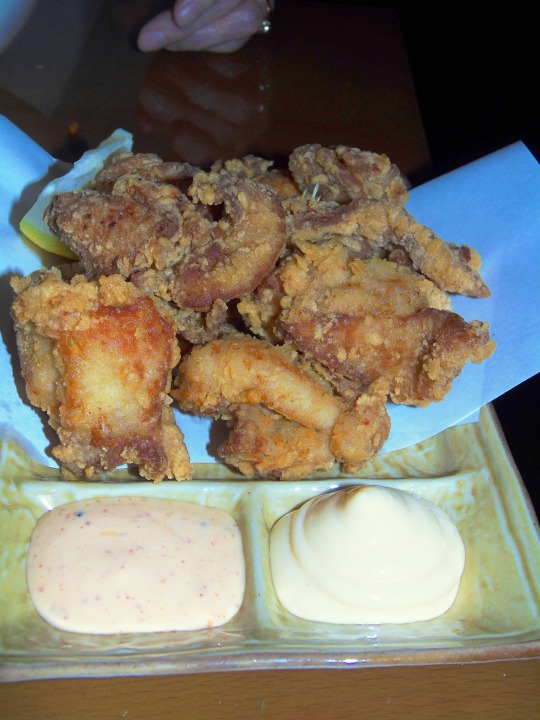

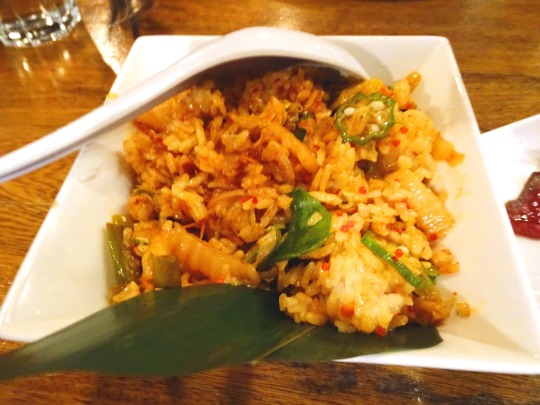
World Tapas Day
Never tried tapas? Then you’re missing out! On World Tapas Day, we’re all about celebrating everything that makes these bite-size savory dishes so great and tasty.
This mainstay of Spanish cuisine is often served up as a snack or as an appetizer before a meal, and can include lots of tasty things from olives and cheese to hams and squid.
Be sure to take the time out to try at least one tapas today – or perhaps visit a tapas restaurant and find out which ones you love best!
The History of World Tapas Day
The third Thursday of the month of June was designated as World Tapas Day by the country of its creation, Spain, in 2016. Being such a popular and famous method of serving up delicious goodies, it’s no wonder that it got its own day.
The word ‘tapas’ comes from the Spanish word ‘tapar’, which is a verb meaning ‘to cover’. The actual action of serving up small dishes was popularized before the 19th century when travelers visiting inns would often be served up small samples of food available.
There’s also a story that says that tapas was originally bread or meat which was draped over the mouths of sherry glasses in-between sips, to prevent flies from getting into the sweet beverage. Especially salty meats such as chorizo would be used to encourage the punters to keep drinking.
How to Celebrate World Tapas Day
Because tapas is essentially small portions of traditional or popular Spanish cuisine, there are so many types of tapas that you could try today.
Olives, Chorizo sausage, crusty bread, tender beef, battered squid, cabrales cheese, vegetables, fried quail eggs, anchovies, pork scallops, battered prawns, stuffed mussels, meatballs – the potential combinations are endless! Many restaurants give you the option of making your own meal combo with the variety of tapas available. Even the pickiest of eaters will find something to love!
Many restaurants give you the option of making your own meal combo with the variety of tapas available. Even the pickiest of eaters will find something to love!
A lot of the tapas you will find often includes pork, beef or fish – but there is a whole wealth of vegetarian tapas to enjoy if you’re not a meat eater.
And if you’re feeling adventurous on World Tapas Day, you could have a go at making your own homemade tapas. You’d be surprised how simple some are to make!
Source
#Bündner Fleisch Mille Feuiilles#World Tapas Day#WorldTapasDay#16 June#food#restaurant#original photography#miss KOREA BBQ#Deep Fried Garlic and Beef#Beef Tataki#Lotus Root Chips#Champños Serranos#Spicy Okra Tofu Pork#Okra Kimchi Fried Rice#Don Don Izakaya#Ginger Fried Chicken#international day
1 note
·
View note